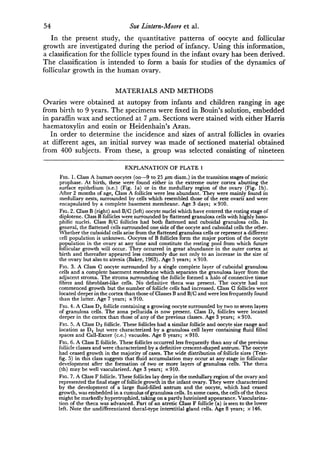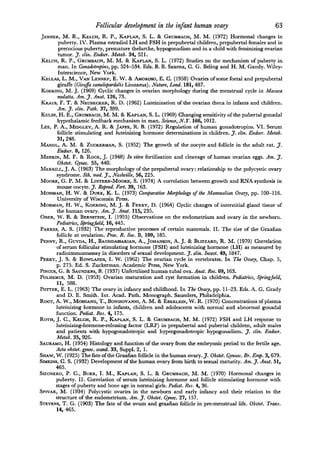1) The study examined follicular development in human ovaries from birth to age 9. Nine major classes of follicles were identified based on morphology, size, number of granulosa cells, and oocyte growth.
2) The smallest follicles (Class B) contained a non-growing oocyte surrounded by a single layer of flattened cells. The largest follicles (Class F) reached 6 mm and contained a fully grown oocyte of 80 μm surrounded by fluid and granulosa cells.
3) Follicle development followed the same pattern across ages from birth to 9 years, with oocyte growth ceasing at 80 μm while follicles continued growing, forming fluid-filled antra.












